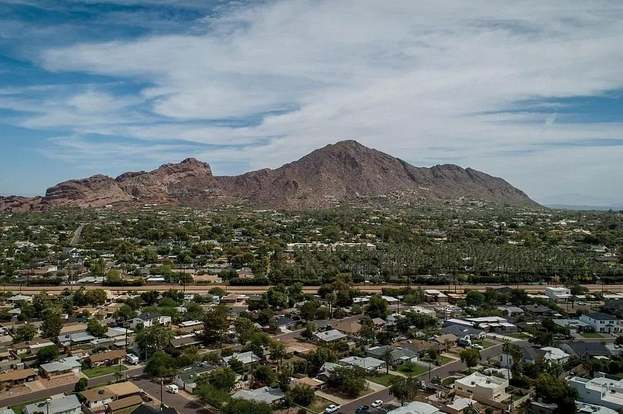Bookended by the 2008 crash and COVID-19, the decade between 2009 and 2019 was a transformative one for the real estate industry. Curious to see how the housing market had fared between the two most significant, yet wildly different economic downturns in history, we analyzed residential sales across the U.S., putting the largest urban centers in the country into sharp focus. Then, we identified homes that sold in both 2009 and 2019 to pinpoint the most accurate changes in home prices, taking inflation into account, in order to determine the best price ranges for home price appreciation over the past decade, and the best cities for homeownership, home price growth and home value gains.
Key takeaways from our study:
• The national median resale price was $275,000, up a notable 35% over 2009 levels.
• Homes over $2 million resold with the highest price increase and large urban centers surpassed national price gains across all price ranges.
• Phoenix home price growth rate was among the 10 sharpest in the U.S — actually, Phoenix buyers fared third-best nationally, reselling their homes in 2019 at a 78% gain.
• Phoenix recorded significant gains across all price ranges, fueled by a 149% increase for homes sold between $100K and $250K.
• Phoenix properties priced between $1 million and $2 million resold with a 135% median sale price increase over 2009 levels.
READ ALSO: Are Californians ruining the Arizona housing market?
Oakland Residents Resell at 113% Home Price Growth, Virginia Beach Homeowners Lose $26K
As far as home price evolution at the city level, it became clear that West Coast homeowners fared the best. Specifically, of the 10 sharpest home price gains, eight were recorded in western states, with California alone claiming four, including the two highest: Oakland’s 113% surge and Sacramento’s 93%. Phoenix buyers fared third-best nationally, reselling their homes in 2019 at a 78% higher median resale price than a decade prior, which translated to $102,000 gain when adjusting for inflation.
Denver owners came next with a 72% increase in the median resale price of homes purchased a decade prior, which translated into a $164,000 inflation-adjusted gain. Not far behind, San Francisco came in fifth for home price growth, just barely behind Denver in terms of the rate of increase. Its 71% gain translated to a $539,000 median yield after inflation.
On the other side of the country, Boston was the East Coast’s only representative among the 10 sharpest median resale price gains in the country. Tied at #9 with Seattle homeowners with a 51% increase, Boston homeowners who purchased in 2009 resold their homes in 2019 for an inflation-adjusted gain of $271,000.

The Eastern U.S. also provided two of the four cities where owners who bought in 2009 sold at a loss in 2019, joined by two Midwest locales. In particular, Virginia Beach, Va., led both in percentages and in actual dollar amount, with sellers trading their homes at a median 9% below 2009 levels, resulting in a loss of $26,000 when adjusting for inflation. In the Bronx, sellers fared somewhat better, but homes here still sold for a median $246,000 in 2019 — 7% below 2009 levels — which translated to an inflation-adjusted loss of $17,000.
Meanwhile, Milwaukee homeowners who bought homes in 2009 resold them at a loss a decade later as well, with the city’s 5% median resale price contraction resulting in a $7,000 loss after inflation. Milwaukee’s depressed housing trends were consistent across all price ranges, with negative growth registered for all ranges below $1 million. Notably, there were next to no residential property sales in Milwaukee that were above the $1 million mark that sold in both 2009 and 2019.
A slightly positive bright side for Milwaukee residents were those who sold in the $750,000 to $1 million range. They did so at a mere 1% loss, with their rate of depreciation increasing at an inversely proportional rate to the median.
Large Urban Centers Surpass National Price Gains Across All Price Ranges
Overall, buying a home in the 2010s was worth it, especially in the majority of large urban centers. Nationally, homes sold at a median resale price of $275,000 in 2019, rising 35% from their 2009 median sale price of $204,000.
In fact, homes over $100,000 resold at a minimum 32% higher price point a decade later, while homes under $100,000 resold at a mere 3% increase — emphasizing the disparity in value gains for lower- and higher-priced, especially luxury, properties. Indeed, homes that changed hands for $2 million and more in 2019 did so at 40% price increase over their 2009 sale price. In actual dollar values, that equated to a $766,000 increase in their median resale price when adjusting for inflation.
Meanwhile, when looking at homes that sold in both 2009 and 2019 in the country’s largest urban centers, sales trends both paralleled and diverged from national trends.

More precisely, homes in large urban centers appreciated in value at a noticeably more accelerated pace than the overall U.S. residential market. For instance, homes in the $500,000 to $750,000 range traded at a 35% increase, compared to the 30% national gain for that category. Even more noticeably, homes in the $100,000 to $250,000 price range resold at a 49% price jump than a decade prior, while nationally that range was up 33%.




